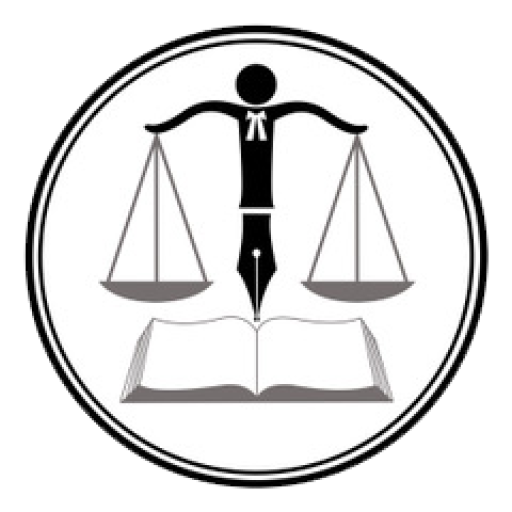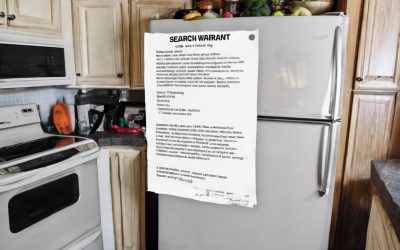I. Introduction and Overview
[1] The accused before me, Darcy Victor Willier, stands charged on a 16-count Direct Indictment. The charges include arson and the unauthorized possession of a firearm. The accused now applies to set aside two judicial authorizations obtained by the Edmonton Police Service (“EPS”) during the investigation that led to the charges.
[2] The first judicial authorization at issue is a General Production Order issued by the Hon. Justice Godfrey of the Provincial Court of Alberta (now the Alberta Court of Justice) on November 17, 2021, pursuant to s. 487.014 of the Criminal Code, RSC 1985 c C-46. That General Production Order required Alberta Health Services to produce “All paper and electronic health records, including Netcare Records, in their entirety from June 10, 2021 – June 11, 2021 at the University of Alberta Hospital and East Edmonton Health Centre for patient Darcy Victor Willier”.
[4] I find that the accused’s application to set aside the General Production Order must be granted, and that the accused’s application to set aside Warrant RN05 must be dismissed.
II. The Accused’s Challenge to the General Production Order
A. Information to Obtain RN01
[6] The EPS investigation which led to the present prosecution was called “Project Ignis” which was initiated in September, 2021. The project related to a series of fires at residential properties in Edmonton which the police believed to have been intentionally set.
[7] A particular focus of Project Ignis at the time ITO RN01 was sworn was a certain fire set at 11921 91 Street during the early morning hours of June 2, 2021. That fire was set by an individual named Kasey Hetherington, who later pleaded guilty to one or more charges arising from that fire.
[8] A custodial interview of Hetherington was conducted on July 12, 2021, by Det. Roggie Bourque, and the material aspects of that interview were summarized by Det. Nichol in ITO RN01. During that interview, Hetherington admitted to starting the fire to 11921 91 Street using gasoline from a red jerry can and a Bic lighter.
[9] Hetherington also told Det. Bourque that he had started the fire since an individual named Abdullah Shah, also known as Carmen Pervez, and the accused had approached Hetherington and told him that he had no choice but to start the fire or that Hetherington’s sister would get hurt. Hetherington also told Det. Bourque that the accused had handed Hetherington a red jerry can for the purpose of starting the fire with gasoline, and later confronted Hetherington for not doing the job well enough.
[11] Hetherington also told the police that he had observed burn marks on the accused’s arms and legs….
[12] On October 21, 2021, the police contacted the University of Alberta Hospital to inquire KEY as to whether the accused had received medical treatment in June or July, 2021. Det. Nichol recounts these investigative steps in the following paragraphs of ITO RN01:
28) On October 21, 2021, I spoke to Detective Collis. Detective Collis informed me that he had spoken to University of Alberta Hospital Security, who confirmed that Willier attended the University of Alberta Hospital on June 10, 2021. Security could not disclose his reason for attending.
29) On October 21, 2021 I called the University of Alberta Hospital Access and Disclosure section and spoke to Joyce Appiah (Appiah). Appiah confirmed the following
a. Willier attended the East Edmonton Health Centre June 10-11, 2021 for burn treatment to his body.
[15] Based upon the information obtained from Hetherington and the University of Alberta Hospital, Det. Nichol offered the following investigator’s comments at page 18 of ITO RN01:
Investigators Comment: Accessing a hospital for burn treatment indicates to me that the burns suffered by Willier were not minor in nature – he required emergency, professional medical treatment due to the severity of the burns. This is consistent with the information provided by Hetherington – Willier had suffered serious burns to both arms, torso, and legs.
Investigators Comment: Based on the information from University of Alberta Hospital Security, as well as the confirmation from Appiah of the University of Alberta Hospital Access and Disclosure Section, I have reasonable grounds to believe that Willier attended the University of Alberta Hospital and the East Edmonton Health Centre on June 10 and 11, 2021 for burn treatment.
Based on previous investigations, I know that medical records are kept when individuals attend hospitals for treatment. As a result, I believe that there will be medical records for the treatment(s) administered to Willier on those dates for his burns.
Investigators Comment: I believe that information from the requested medical records will afford evidence of the offense of arson specifically:
a. The medical records will corroborate the information provided to police by Hetherington during his post-arrest interview, and
b. The medical records will indicate the nature, extent, and location of the burns suffered by Willier, as well as their likely mechanism (ie: heat vs. chemical burn). These records may also indicate where, when, and how, the burns were suffered.
[16] Nothing in either ITO RN01 or Det. Nichol’s testimony referred to s. 37.3 of the Health Information Act, RSA 2000 c H-5 (“HIA”) as having been considered by anyone at any point during the evidence gathering process.
B. The Parties’ Positions on the Accused’s Challenge to the General Production Order
[17] The accused now argues that the police’s gathering of information from security personnel and Ms. Appiah at the University of Alberta Hospital respecting the accused’s admission for medical treatment on June 10-11, 2021, constituted an unreasonable search and seizure contrary to s. 8 of the Charter. He seeks excision of that information from Det. Nichol’s ITO RN01 of November 17, 2021, and an order setting aside the resulting General Production Order of the same date.
C. Section 8 of the Charter
D. Was Det. Nichol’s Information Gathering of October 21, 2021 a Search or Seizure?
(i) The Test for a “Reasonable Expectation of Privacy”
[21] The essence of a “seizure” for the purposes of s. 8 is the taking of a thing from a person by a public authority without that person’s consent: R vDyment, [1988] 2 SCR 417 at p. 431. For a taking to engage s. 8, the person must have a “reasonable privacy interest” or what is often called a “reasonable expectation of privacy” in the object or subject matter of the state action and the information to which it gives access: R v Cole, 2012 SCC 53 at para. 34
[23] Dealing more specifically with information gathering by the police, it is well established that s. 8’s protection extends to information: R v Jarvis, 2019 SCC 10 at para. 66. An “information privacy” claim is made where an individual asserts the right “to determine for themselves when, how, and to what extent information about them is communicated to others”: R v Tessling, 2004 SCC 67 at para. 23. In other words, this aspect of privacy is concerned with “informational self-determination”: R v Bykovets, 2024 SCC 6 at para. 32. In R v Gomboc, 2010 SCC 55 at para. 34, Deschamps J. explained that where a right of privacy is claimed in information, the following considerations apply:
34 . Determining the expectation of privacy requires examination of whether disclosure involved biographical core data, revealing intimate and private information for which individuals rightly expect constitutional privacy protection.. the appropriate question is whether the information is the sort that society accepts should remain out of the state’s hands because of what it reveals about the person involved, the reasons why it was collected, and the circumstances in which it was intended to be used.
[Underlining added]
(ii) The Subject M atter of the Search
[26] When Det. Nichol and Det. Collis contacted the University of Alberta Hospital and made their inquiries respecting the accused, they were seeking to learn whether the accused had sought and obtained medical treatment for burn injuries from medical professionals, and if so, where and when that treatment had occurred. More specifically, they were seeking to confirm the information from Hetherington that the accused had “a bunch of burn marks all over him, big burn marks all over his.., down into his legs.., massive burns”, and burns “all over the arms, legs, and torso”
[28] From the information provided, Det. Nichol was able to draw certain inferences respecting the severity of the accused’s health problems. In his words: “Accessing a hospital for burn treatment indicates to me that the burns suffered by Willier were not minor in nature – he required emergency, professional medical treatment due to the severity of the burns.”
[30] In summary, when Det. Collis and Det. Nichol contacted the University of Alberta Hospital on October 21, 2021, they were seeking information respecting the nature of the accused’s medical condition, and in particular that the accused had suffered serious burns to his body. The specific information they obtained on that date was that the accused “attended the East Edmonton Health Centre June 10-11, 2021 for burn treatment to his body”.
(iv) The Accused’s Subjective Expectation of Privacy
[33] Although the accused did not testify on the voir dire, I find that it may be readily inferred that he had a subjective expectation that the information he disclosed to health professionals to obtain medical treatment would be held in confidence.
(v) Was the Accused’s Subjective Expectation of Privacy in the Health Information Objectively Reasonable?
[36] Since a reasonable expectation of privacy is a normative rather than a descriptive standard, a subjective expectation of privacy is insufficient in and of itself. The expectation of privacy must also be objectively reasonable: Tessling at para. 42. The assessment of this requirement entails an examination of a broad array of contextual factors.
[38] LaForest J. went on in Dyment to emphasize at p. 434 that “the courts must be especially alert to prevent undue incursions into the private lives of individuals by loose arrangements between hospital personnel and law enforcement officers.”
[39] Following Dyment, many cases have found that the gathering of medical information from health care workers by the police constitutes a search or a seizure for the purposes of s. 8. These cases include R v Dersch, [1993] 3 SCR 768 where a doctor provided a written report to the police disclosing the results of blood alcohol testing, R v Erickson, 1992 ABCA 69, affd [1993] 2 SCR 649 where a doctor showed blood alcohol testing results to the police, R v Kiene, 2013 ABQB 592, affd 2015 ABCA 326 where the police obtained hospital records pursuant to ineffective consent form, R v Taylor, 2013 ABCA 342, affd 2014 SCC 50, where the police stood nearby the accused’s hospital bed and observed the performance of medical treatment, and R v SS, 2023 ONCA 130 where a police officer overheard answers given to a paramedic during a medical examination in the back of an ambulance.
[40] In summary, a reasonable expectation of privacy has been found to exist in health information in many contexts. This conclusion has been reached since such information originates from a relationship which has traditionally been recognized as confidential, and since the disclosure of personal information to medical professionals is necessary to obtain medical treatment. Were it not so, people in Canada might be reluctant to seek professional medical treatment when needed.
(b) W hat the Information Reveals about the Accused
[42] The information at issue in this case pertained to the presence of burn injuries to the accused’s body. It was also possible to infer from this information, as Det. Nichol did, that the burn injuries were severe enough to require treatment from a professional over the course of two days.
[44] Treatment for burn injuries would have required the accused to expose his bare skin to his health care providers, including on areas of the body that are normally covered by clothing….
[45] I conclude that the information disclosed by the University of Alberta Hospital revealed facts of a highly intimate and personal nature. It revealed the presence of serious injuries upon the skin of the accused’s own body, including on areas that would normally be covered by clothing. This information may fairly be described as part of the accused’s “biographical core”.
(c) The Reasons Why the Information was Collected
[47]….As noted above, LaForest J. emphasized in Dyment at pp. 433-34 that s. 8 protects information disclosed to health care professionals to obtain medical treatment since the patient “is forced to reveal information of a most intimate character to… protect his life or health”. This is the reason why the information at issue in the present case was collected.
(e) Section 37.3 of the Health Information Act of Alberta
[50] I turn next to my consideration of s. 37.3 of the HIA. As noted above, the Crown submits that the University of Alberta Hospital was “entitled” to disclose the accused’s medical information to the police by operation of that provision.
[51]….In Canada, such legislation is potentially relevant at both stages of the s. 8 analysis since it may support a conclusion that the accused’s expectation of privacy is not “objectively reasonable”, or a conclusion that a search or seizure was “authorized by” the legislation.
1. The Legislative Context of s. 37.3
[52] Section 37.3 of the HIA reads:
Disclosure to protect public health and safety
37.3(1) A custodian may disclose individually identifying health information referred to in subsection (2) without the consent of the individual who is the subject of the information to a police service or the Minister of Justice where the custodian reasonably believes
(a) that the information relates to the possible commission of an offence under a statute or regulation of Alberta or Canada, and
(b) that the disclosure will protect the health and safety of Albertans.
(2) A custodian may disclose the following information under subsection(1):
(a) the name of an individual;
(b) the date of birth of an individual;
(c) the nature of any injury or illness of an individual;
(d) the date on which a health service was sought or received by an individual;
(e) the location where an individual sought or received a health service;
(f) whether any samples of bodily substances were taken from an individual;
(g) information specified in section 1(1)(i)(ii) about a health services provider who provided a health service to an individual referred to in subsection (1).
[Underlining added]
[53] Section 2 of the HIA confirms that the overarching purpose of the HIA is to protect the privacy of health information:
2 The purposes of this Act are
(a) to establish strong and effective mechanisms to protect the privacy of individuals with respect to their health information and to protect the confidentiality of that information,
[…]
(c) to prescribe rules for the collection, use and disclosure of health information, which are to be carried out in the most limited manner and with the highest degree of anonymity that is possible in the circumstances.
2. The Legislative History of the W ord “May”
[57] In its Final Report of October, 2004, the Committee recommended that the HIA be amended to “mandate” the disclosure of health information to the police under certain defined circumstances.
[58] The Committee’s recommendation for mandatory disclosure by health care providers to the police raised concerns on the part of interested observers. Dr. Mat Rose, a general practitioner at Edmonton’s Boyle McCauley Health Cetnre expressed the view that that recommendation “should make any reasonable physician recoil in horror.” In somewhat less emphatic terms, Frank Work, Alberta’s Information and Privacy Commissioner, stated that he did not oppose the creation of a discretionary authority to disclose but “opposes the creation of mandatory disclosure and reporting of health information to law enforcement”.
[59] The concerns raised by Dr. Rose and the Privacy Commissioner were answered by the government in the terms of the subsequent Bill 31 of 2006. Section 7 of Bill 31 contained s. 37.3 in substantially its current form, including the word “may”….
[60] Shortly after its enactment, academic commentators expressed the view that s. 37.3 of the HIA “is both unwise and unconstitutional”.8 Despite the existence of these concerns, no constitutional challenge to the validity of s. 37.3 has been brought in the present case.
3. Alberta Case Law Interpreting Section 37.3 of the HIA
[61] Section 37.3 of the HIA was briefly considered by both Berger and O’Brien JJ.A., for the majority, and Slatter J.A., dissenting, in R v Taylor, 2013 ABCA 342, affd 2014 SCC 50. In that case, the majority found at paras. 32-38 that the police had breached the accused’s s. 8 rights by standing nearby his hospital bed and observing medical treatment provided to him by health care providers, including the drawing of blood. In doing so, the majority invoked both the principles in Dyment and the general prohibition against the disclosure of health information in the HIA. With respect to s. 37.3 of the HIA, the majority wrote:
38 …Of course, there are exceptions [to the HIA’s general prohibition against disclosing health information], but none, in our opinion, apply so as to permit the police to ascertain from healthcare personnel whether it is the intention of medical personnel to draw “hospital blood”, to observe the procedure, and to track the vials for purposes of continuity in furtherance of a police investigation. We would add only that, with respect, Slatter J.A.’s contention [at para. 93] that s. 37.3(1) of the Act contains a clear exception for disclosure of information to a police service where “the information relates to the possible commission of an offence” ignores the requirement that a warrant be obtained permitting such information to be disclosed. No such warrant had been issued when the “hospital blood” was drawn.
[Underlining added]
[62] As I read the above passage from Taylor, the majority found that s. 37.3 of the HIA does not negate the police’s general obligation to obtain a warrant before seizing health information which attracts a reasonable expectation of privacy. That conclusion is consistent with the reasoning reflected in the out-of-province authorities summarized below.
[63] Although the majority’s decision in Taylor was affirmed in R v Taylor, 2014 SCC 50, the Supreme Court of Canada confined its analysis to s. 10(b) of the Charter and found it unnecessary to consider s. 8 or the HIA (para. 36). Consequently, the conclusions of the majority of the Court of Appeal respecting s. 37.3 were left undisturbed.
4. Out-of-Province Cases Respecting the Impact of Police Assistance Provisions in Privacy Legislation on the Section 8 Analysis
[66] R v Trapp, 2011 SKCA 143 addressed a s. 8 challenge to a warrantless acquisition of subscriber information from an internet service provider (“ISP”) for use in a child pornography investigation. In response to that challenge, the Crown submitted that the voluntary provision of that information by the ISP to the police was authorized by s. 29(2)(g) of The Freedom of Information and Protection of Privacy Act, SS 1990-91, c F-22.01.9 Cameron J.A., for the majority of the Court, found that since that provision does not create any police power of search or seizure, it did not negate the accused’s reasonable expectation of privacy:
[67] Cameron J.A. went on in Trapp to conclude that a reasonable expectation of privacy in the subscriber’s information continued to exist: para. 58. However, since, in his view, the combined effect of s. 29(2)(g) and s. 487.014(1) (now 487.0195 (1)) of the Criminal Code was to authorize the seizure at issue, he concluded that the seizure was “authorized by law” and therefore not unreasonable for the purposes of s. 8: paras. 66-71.
[68] In R v Ward, 2012 ONCA 660, Doherty J.A. addressed another s. 8 challenge to the warrantless acquisition of subscriber information from an ISP for the purposes of a child pornography investigation. In their request letters to the ISP, the RCMP had invoked s. 7(3)(c.1)(ii) of the Personal Information Protection and Electronic Documents Act, S.C. 2000, c. 5 (“PIPEDA”) which provides that an organization “may” disclose information to a government institution for law enforcement purposes if the institution has, among other things, “identified its lawful authority to obtain the information”.11 Doherty J.A. concluded that this provision does not confer any search or seizure power upon the police:
[70] The subsequent case of R v Spencer, 2014 SCC 43 also addressed yet another s. 8 challenge to a warrantless acquisition of subscriber information from an ISP provider for use in a child pornography investigation. Cromwell J. for a unanimous court, specifically agreed with Doherty J.A.’s conclusion in Ward that s. 7(3)(c.1)(ii) of PIPEDA does not create any search and seizure powers (paras. 71-73), but specifically disagreed with Doherty J.A.’s conclusion that s. 7(3)(c.1)(ii) could be relied upon as a factor weighing against the existence of a reasonable expectation of privacy: paras. 62-63. In doing so, Cromwell J. emphasized that the purpose of PIPEDA, a privacy statute, is to increase the protection of personal information, and that it would defeat the operation of such statutes if law enforcement disclosure provisions were treated as equivalent to powers of search and seizure:
[72] Cromwell J. went on at paras. 68-73 of Spencer to conclude that since neither s. 7(3)(c.1)(ii) nor s. 487.014(1) (now 487.0195 (1)) create any search or seizure powers, the resulting search was not “lawful” for the purposes of s. 8 of the Charter. In his words at para. 65, the police’s request “had no lawful authority in the sense that while the police could ask, they had no authority to compel compliance with that request.” In reaching this conclusion, Cromwell J. specifically disagreed with Cameron J.A.’s decision on this point at paras. 66-71 of Trapp.
[73] Cromwell J.’s analysis in Spencer placed particular emphasis upon s. 7(3)(c.1)(ii)’s requirement that the police identify the “lawful authority” underlying their request. No such requirement is contained in s. 37.3 of Alberta’s HIA. However, the reasoning in Spencer has since been extended to other permissive law enforcement exceptions in privacy legislation which contain no such requirement.
[74] Doherty J.A. returned to the subject of PIPEDA’s impact upon s. 8 of the Charter in R v Orlandis-Habsburgo, 2017 ONCA 649. That case involved a s. 8 challenge to the warrantless provision of electricity use information to the police by an energy provider. In addition to s. 7(3)(c.1)(ii) of PIPEDA, the Crown invoked s. 32(g) of the Municipal Freedom of Information and Protection of Privacy Act, RSO 1990, c M-56 (“MFIPPA”) which provides that an institution shall not disclose personal information except “if disclosure is to… a law enforcement agency in Canada to aid an investigation undertaken with a view to a law enforcement proceeding”. That provision did not contain any requirement that the police identify an independent source of “lawful authority”. While acknowledging that this provision was broader than that at issue in Spencer, Doherty J.A. followed Spencer in holding that it did not negate the subscriber’s reasonable expectation of privacy in the energy use information:
[76] In R v SS, 2023 ONCA 130, the principles reflected in Ward, Spencer, and OrlandisHabsburgo were applied to s. 8 challenge to a gathering of health information by the police. In that case, a police officer had ridden in the back of an ambulance with the accused following a fatal collision and had listened to the accused disclose self-incriminatory information to a paramedic for the purposes of a medical examination. As in Orlandis-Habsburgo, the Crown submitted that s. 32(g) of MFIPPA negated the accused’s reasonable expectation of privacy in that information. In rejecting these arguments, Paciocco J.A. wrote:
45 In order to prevent disclosure exceptions in privacy legislation from playing this kind of role, this court has cautioned that disclosure exceptions are not to be interpreted in a way that makes privacy legislation “‘virtually meaningless’ in the context of an ongoing police investigation”, nor should disclosure exceptions be taken as defeating the reasonable expectations of privacy recognized in the legislation as a whole: R. v. Orlandis-Habsburgo, 2017 ONCA 649, 352 C.C.C. (3d) 525, at paras. 103, 111. After all, disclosure exceptions exist not to deny privacy interests, but to protect persons who disclose private health care information pursuant to those exceptions from being prosecuted for breach of the statute. [footnote omitted] In my view, the Crown is placing an importance on its claimed disclosure exception that such an exception would not properly bear.
5. Conclusions on the Impact of s. 37.3 of the HIA
[77] Reading s. 37.3 in the context of the entire HIA, its purpose, its legislative history, and the case law summarized above, I draw the following conclusions.
[78] The function of s. 37.3 is not to impose a mandatory obligation upon a custodian to disclose health information to the police. Rather, its function is to prescribe certain circumstances under which a “custodian” may choose to disclose certain limited health care information to the police without committing an offence contrary to s. 107(6): SS at para. 45. The disclosure of health information permitted by s. 37.3 is limited to the categories of information listed in s. 37.3(2): Kiene at paras. 62-64.
[79] Section 37.3 confers a discretionary authority upon a custodian to disclose health information to the police or the Minister of Justice. The word “may” in s. 37.3 implies “that the holder of the authority can lawfully decide whether or not to exercise that authority”: Trapp at para. 53. The adoption of this word reflects a considered decision by the Legislature to make disclosure by health care providers to law enforcement discretionary and not mandatory.
[80] Since s. 37.3 does not create any mandatory obligation to disclose health information, it confers no search or seizure power upon the police: Trapp at para. 51; Ward at para. 46; Spencer at para. 71, SS at para. 44. As Cromwell J. stated in Spencer at para. 65, “while the police could ask, they had no authority to compel compliance with that request”. Consequently, s. 37.3 does not negate the police’s general obligation to obtain a warrant before seizing any health information in which a person holds a reasonable expectation of privacy: Taylor at para. 38.
[81] Since s. 37.3 does not confer any search or seizure power upon the police, the disclosure of information by a custodian pursuant to s. 37.3 in response to a police request cannot be said to be “authorized by law” for the purposes of s. 8 of the Charter: Spencer at paras. 68-73; Orlandis-Habsburgo at paras. 116-119.
[82] Although s. 37.3 does not require a specific request from the police, it also does not authorize an ongoing or routine sharing of health information with the police whenever the police may have some interest in the information: Orlandis-Habsburgo at para.107.
[85] Finally, since the overarching purpose of the HIA is to protect the privacy of health information, s. 37.3 cannot be applied in a manner that would render the HIA’s privacy protections “virtually meaningless” in the context of an ongoing police investigation, or to defeat the individual’s reasonable expectation of privacy in health information: Orlandis-Habsburgo at paras. 103, 111; SS at para. 45. Even if it can be said that s. 37.3 “diminishes, in some measure, the relevant expectations of privacy, it does not do so materially”: SS at para. 43-45. In short, s. 37.3 “cannot be used as a factor to weigh against the existence of a reasonable expectation of privacy” for the purposes of s. 8: Spencer at paras. 61-63, 71-73; Trapp at para. 58; SS at para. 47.
[86] The facts of the present case do not raise the issue of whether s. 8 is engaged where a health care provider volunteers information to the police pursuant to s. 37.3 of the HIA when acting on their own initiative and in the absence of any police request for information: R v King, 2021 ABCA 271 at paras. 8-16; Orlandis-Habsburgo at paras. 34-35.
(f) The Accused’s Subjective Expectation of Privacy was Objectively Reasonable
[87] Having considered the totality of the circumstances outlined above, I conclude that the accused’s expectation of privacy in his personal health information was objectively reasonable. That information pertained to serious injuries to the skin of the accused’s body and had been disclosed to health care providers for the purpose of obtaining medical treatment. The health care provider’s duty to hold such information in confidence dates back at least as far as the Hippocratic Oath of ancient Greece, and s. 37.3 of the HIA does not materially diminish the reasonableness of the accused’s subjective expectation of privacy.
E. Was the Search and Seizure of the Accused’s Health Information “Unreasonable”?
[90] A warrantless search or seizure is presumptively unreasonable, and the Crown bears the burden of rebutting that presumption: R v Monney, [1999] 1 SCR 652, at para. 29.
F. Conclusions on Section 8 Breach
[94] In conclusion, I find that the gathering of health information by Det. Collis and Det. Nichol from the University of Alberta Hospital on October 21, 2021, was an unreasonable search and seizure of the accused’s personal health information contrary to s. 8 of the Charter.
G. Automatic Excision from ITO RN05
[95] Given my finding that the information acquired from the University of Alberta Hospital on October 21, 2021, was gathered in violation of s. 8 of the Charter, that information must be “automatically excised” from ITO RN01: Spencer at para. 74; R v Love, 2022 ABCA 269 at paras. 65 and 69.
[96] I therefore find that paragraphs 27, 28, 30(e), and 30(f)(ii), as well as the “Investigator’s Comments” accompanying those paragraphs must be excised from ITO RN01.
H. Review of Production General Production Order of November 17, 2021, After Excision
[99] After excision of the accused’s health information, there is no evidence capable of supplying reasonable grounds to believe that Alberta Health Services would be in possession of paper or electronic health records respecting the accused for the period June 10-11, 2021. Consequently, there is no evidence capable of supplying reasonable grounds to believe that “the document or data is in the person’s possession or control” for the purposes of s. 487.014(2).
[100] I therefore conclude that, following excision of the accused’s health information, there is no basis upon which the General Production Order could have been issued by the authorizing justice.
I. Conclusions on Accused’s Challenge to the General Production Order
[101] For these reasons, the General Production Order of November 17, 2021, is set aside.
[102] Given this conclusion, I find it unnecessary to determine the other arguments raised by the defence with respect to the General Production Order except insofar as those arguments also arise in relation to the next authorization at issue.
IV. Conclusions and Order Granted
[133] In conclusion, the accused’s application to set aside the General Production Order is granted and the accused’s application to set aside Warrant RN05 is dismissed.






